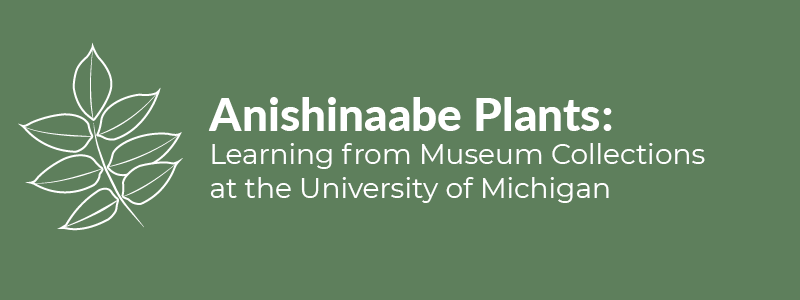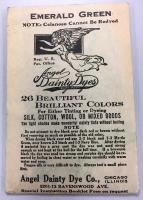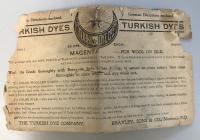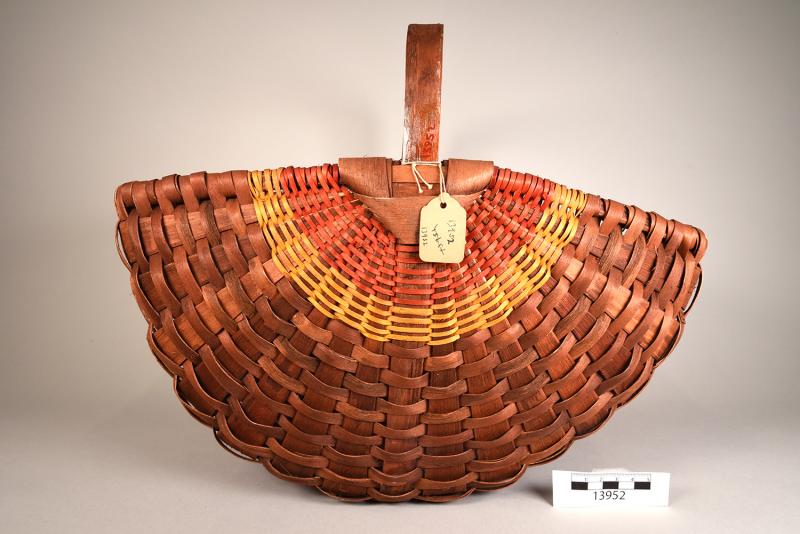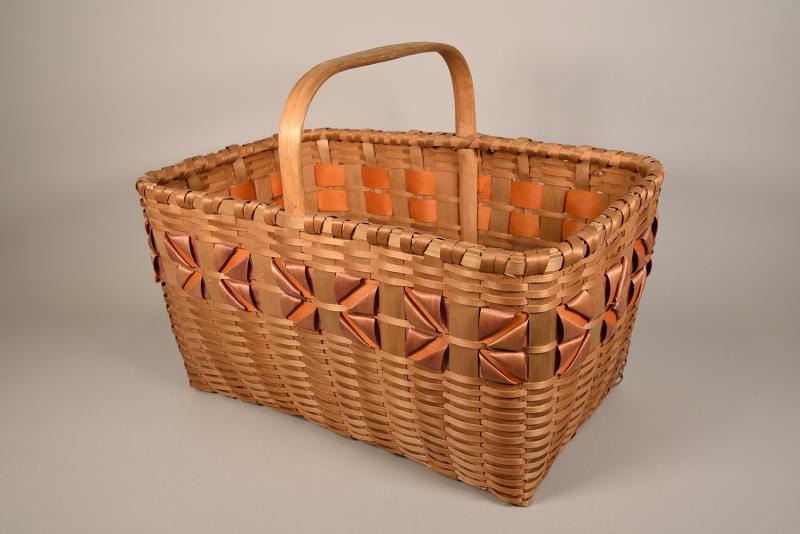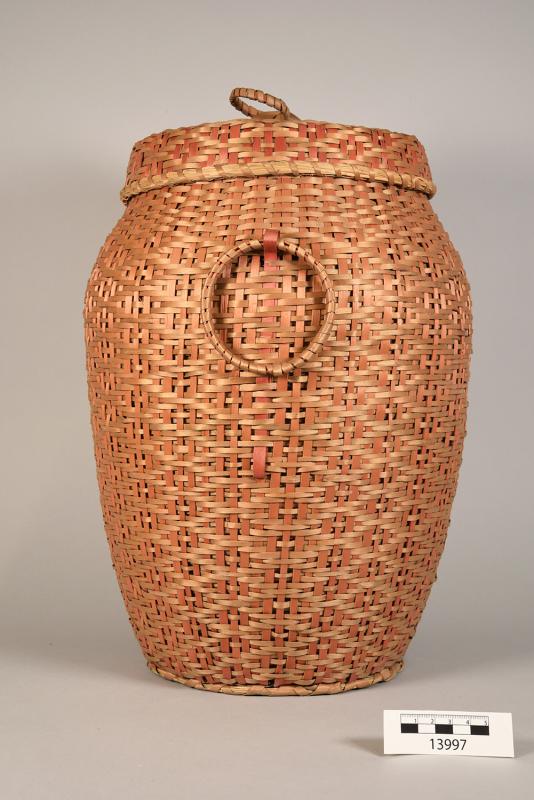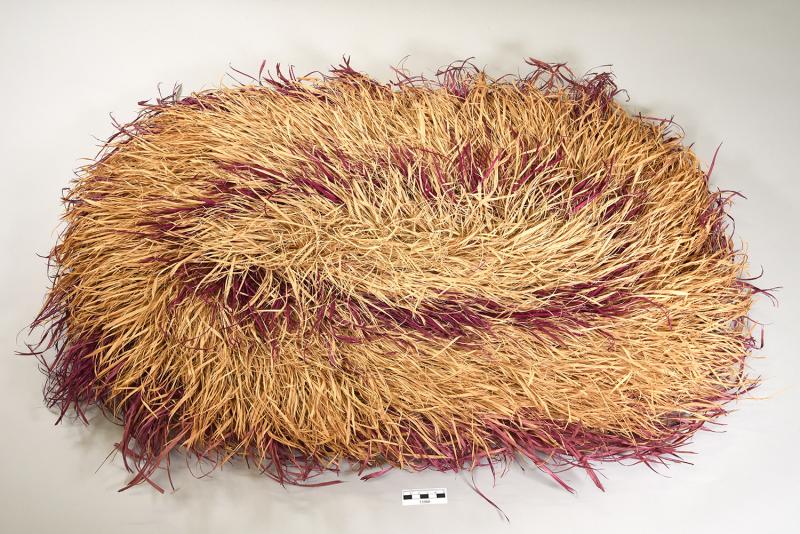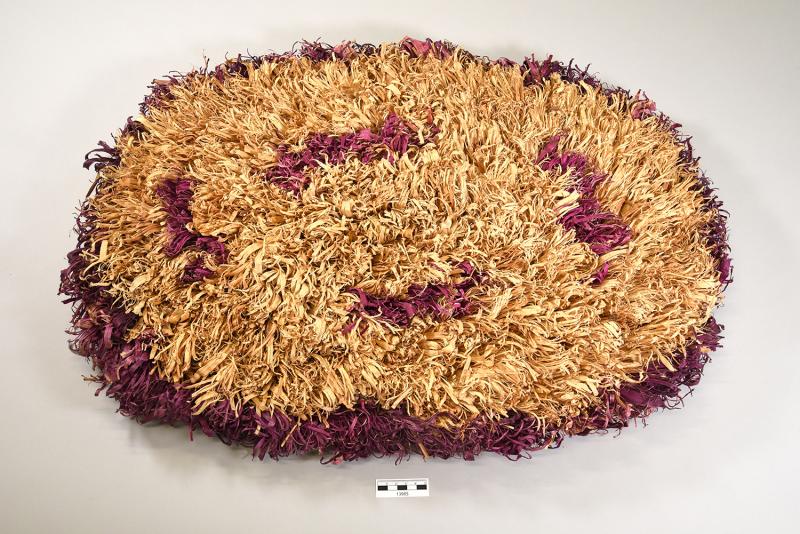Commercial Dyes
Diamond Dyes
The Sturgeon family showed Jones how they used "Diamond Dyes for silk, wool, or silk-wool mixture, color Seal Brown" to dye Black Ash baskets. They added 1/4 of the package to boiling water and told Jones the amount depended on the depth of color desired. After boiling for 10 minutes, ash splints were dipped into the water and then left to partially dry in the grass for a few minutes before use in weaving.
To create blue dye, Mrs. Earle Sands used an entire package of Diamond Dyes. For red dye, she used less than half of a package. Like the Sturgeons, dye was added as water boiled and splints were dipped long enough to be covered by the dye and then placed in the sun to dry. Rather than dipping splints, Joanie Williams of Sugar Island left them to boil with the water and Diamond Dyes mixture for two hours, producing strong colors. She was the only person Jones encountered who also mixed dyes together to create new colors.
Mrs. William Jo Bell dyed green porcupine quills by adding them to a water and Diamond Dyes mixture and boiling them for 15 minutes. Mrs. Lesage also immersed strips, but was careful to ensure she still got strong colors.
Turkish Dyes
Mr. Sturgeon preferred Turkish brand dyes made in Canada over Diamond Dyes because of the richer and more permanent color it created. His mother had also used and preferred them. Though these dyes were no longer manufactured, other community members like Gerald Osahgee and Mrs. Colwell had recently found some old packages sold in isolated stores in the region for a premium price. Gerald used a teaspoon of dye to a quart of water. Rain water was preferred. Turkish dyes were also used in the corn husk mat, the hickory mat, the sifting basket amd the market basket.
Other Dyes
Mrs. Lesage used Diamond Dyes most of the time but preferred Turkish dyes and 'German' dyes made of analine that were more difficult to find. Jones wrote in the margins of his typed notes that this analine dye hadn't been manufactured since before WW1. The daughter of Mrs. Bird at Peshawbestown preferred Angel Dainty Dye to Diamond Dyes, buying them from the American Drug Co. in Traverse city. Mr. Osahgee liked the more varied colors of this brand as well.
